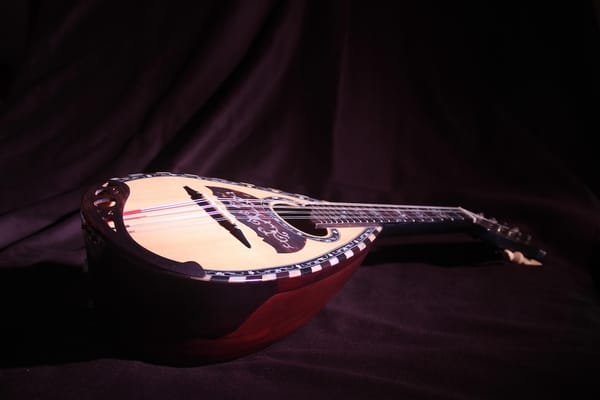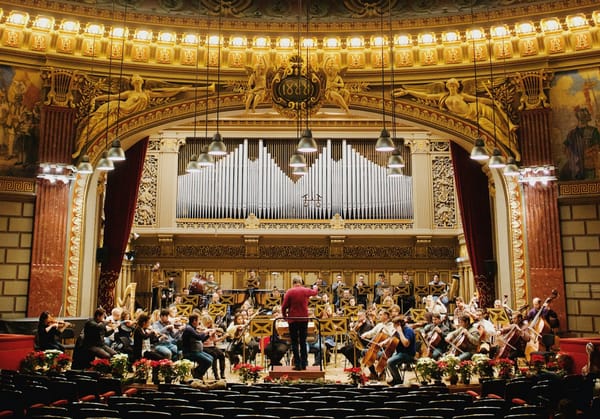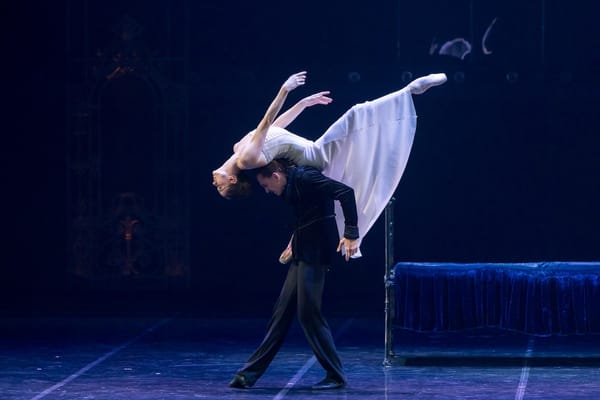The Anatomy of a Symphony Orchestra: Instruments, Structure, and Performance
A symphony orchestra is a finely tuned ensemble, blending diverse instruments into a unified sound. From its structure to performance practices, understanding its intricate anatomy deepens our appreciation for the artistry behind orchestral music.

A symphony orchestra is a large ensemble of musicians that performs classical music written for a variety of instruments. It is a complex and well-organized entity that can produce a wide range of sounds and musical textures. Understanding the anatomy of a symphony orchestra involves exploring its instruments, structure, and performance practices. This article delves into each of these aspects to provide a comprehensive overview.
Instruments of the Symphony Orchestra
The symphony orchestra is divided into four main sections: strings, woodwinds, brass, and percussion. Each section contributes to the orchestra's overall sound and has its unique characteristics.
1. Strings:
The string section is the largest and most essential part of the orchestra. It typically includes the following instruments:
- Violins: Divided into two groups, first violins and second violins, they often play the main melody and provide harmonic support.
- Violas: Slightly larger than violins, they produce a richer, deeper sound and often play inner harmonies.
- Cellos: With their full, warm tones, cellos provide both melody and harmony, bridging the gap between the high and low sounds.
- Double Basses: The largest and lowest-pitched string instruments, double basses add depth and foundation to the orchestra's sound.
- Harp: While not always included, the harp adds a unique, ethereal texture with its plucked strings.
2. Woodwinds:
The woodwind section adds color and complexity to the orchestra. It includes:
- Flutes: Known for their bright, clear sound, flutes often play melodies and high harmonies.
- Oboes: With a penetrating, nasal tone, oboes are frequently used for expressive, lyrical lines.
- Clarinets: Versatile in range and tone, clarinets can play both melodic and harmonic roles.
- Bassoons: The lowest-pitched woodwinds, bassoons provide a rich, reedy sound that supports the bass line.
- Piccolo: A smaller, higher-pitched version of the flute, adding brilliance to the orchestral texture.
- English Horn: An alto oboe with a deeper, more melancholic sound.
- Bass Clarinet: An extended-range clarinet that adds depth to the woodwind section.
- Contrabassoon: An even lower-pitched bassoon, providing profound bass notes.
3. Brass:
The brass section is known for its powerful, resonant sound. It includes:
- Trumpets: Bright and penetrating, trumpets often play fanfares and prominent melodic lines.
- French Horns: With a rich, mellow tone, French horns can play both melodic and harmonic roles.
- Trombones: Known for their robust and versatile sound, trombones can play both melodic and bass lines.
- Tubas: The lowest-pitched brass instruments, tubas provide a strong foundation in the bass register.
4. Percussion:
The percussion section adds rhythm and texture to the orchestra. It includes a wide variety of instruments:
- Timpani: Also known as kettle drums, timpani are tuned to specific pitches and play rhythmic and melodic roles.
- Snare Drum: A sharp, crisp drum used for rhythmic patterns.
- Bass Drum: A large drum that provides deep, resonant beats.
- Cymbals: Metallic plates that are clashed together or struck to add dramatic accents.
- Triangle: A small, triangular metal instrument that produces a bright, tinkling sound.
- Xylophone: A wooden percussion instrument with a bright, melodic sound.
- Marimba, Vibraphone, and Glockenspiel: Other pitched percussion instruments that add unique timbres.
- Tambourine, Castanets, and Maracas: Handheld percussion instruments that add rhythmic flair.
Structure of the Symphony Orchestra
The structure of a symphony orchestra is hierarchical and well-defined, ensuring smooth coordination and performance. Here’s a breakdown of its structure:
1. Conductor:
The conductor is the leader of the orchestra, responsible for interpreting the music and directing the performance. They use a baton to keep time and cue different sections, ensuring that all musicians play in sync. The conductor's role is crucial for maintaining cohesion and bringing out the desired musical expression.
2. Concertmaster:
The concertmaster is the lead violinist and second-in-command after the conductor. They play the first violin part and often serve as a liaison between the conductor and the musicians. The concertmaster is also responsible for tuning the orchestra before performances.
3. Section Leaders:
Each section (strings, woodwinds, brass, and percussion) has its leader who is responsible for coordinating the musicians within that section. Section leaders ensure that their group plays together and follows the conductor’s instructions.
4. Musicians:
The musicians are the backbone of the orchestra. They are highly skilled instrumentalists who must blend their individual sounds into a cohesive whole. Each musician must be adept at both solo and ensemble playing.
5. Seating Arrangement:
The seating arrangement of a symphony orchestra is designed to optimize the blend and balance of sound. Typically, the strings are seated at the front, with the first violins on the left, second violins on the right, violas in the middle, and cellos and double basses at the back. The woodwinds are positioned behind the strings, followed by the brass, and finally, the percussion at the rear.
Performance Practices
The performance practices of a symphony orchestra are shaped by tradition, the conductor’s vision, and the demands of the repertoire. Here are some key aspects of orchestral performance:
1. Rehearsals:
Rehearsals are essential for preparing a symphony orchestra for a performance. During rehearsals, the conductor works with the musicians to fine-tune the interpretation, address technical challenges, and ensure cohesion. Rehearsals can be extensive, especially for complex works.
2. Interpretation:
The conductor plays a significant role in shaping the interpretation of the music. They make decisions about tempo, dynamics, phrasing, and articulation, guiding the orchestra to achieve a unified interpretation. Each conductor brings their unique perspective to the music, making every performance distinctive.
3. Dynamics and Expression:
Dynamics (the volume of sound) and expression are crucial elements of orchestral performance. Musicians must be sensitive to dynamic markings in the score and the conductor’s cues, ensuring that the music is expressive and dynamic. Crescendos, decrescendos, and sudden changes in volume add drama and intensity to the performance.
4. Balance and Blend:
Achieving a balanced and blended sound is vital for a symphony orchestra. Musicians must listen carefully to each other and adjust their playing to ensure that no section overwhelms the others. The conductor helps to maintain balance, ensuring that all parts are heard clearly.
5. Solo and Ensemble Playing:
While the orchestra primarily functions as an ensemble, there are moments when individual musicians or sections are featured as soloists. These solo passages require the soloists to project their sound and convey the musical expression, while the rest of the orchestra provides supportive accompaniment.
6. Concert Etiquette:
Concert etiquette is an important aspect of orchestral performance. Musicians must dress formally, typically in black attire, and follow specific protocols for entering and exiting the stage. Applause is expected at the end of each piece or movement, and the musicians must acknowledge the audience’s appreciation with bows.
7. Repertoire:
The repertoire of a symphony orchestra is vast and varied, spanning several centuries and styles. It includes symphonies, concertos, overtures, and suites by composers from the Baroque, Classical, Romantic, and Modern eras. Orchestras also perform contemporary works, film scores, and popular music arrangements, showcasing their versatility.
8. Collaboration with Soloists and Ensembles:
Symphony orchestras often collaborate with soloists, such as pianists, violinists, and singers, as well as with choirs and smaller ensembles. These collaborations add diversity to the concert program and provide opportunities for musicians to explore different musical genres and styles.
9. Recording and Broadcasting:
In addition to live performances, symphony orchestras frequently engage in recording and broadcasting projects. Recordings capture the orchestra’s artistry and allow the music to reach a broader audience. Broadcasts, whether on radio, television, or online platforms, bring the live concert experience to listeners and viewers worldwide.
Conclusion
The anatomy of a symphony orchestra is a fascinating blend of instruments, structure, and performance practices. Each element plays a vital role in creating the rich and dynamic sound that defines orchestral music. Understanding the intricacies of the orchestra enhances our appreciation of its performances and the remarkable skill and coordination required to bring great music to life. Whether experienced in a grand concert hall or through recordings, the symphony orchestra continues to inspire and captivate audiences with its timeless and powerful artistry.





